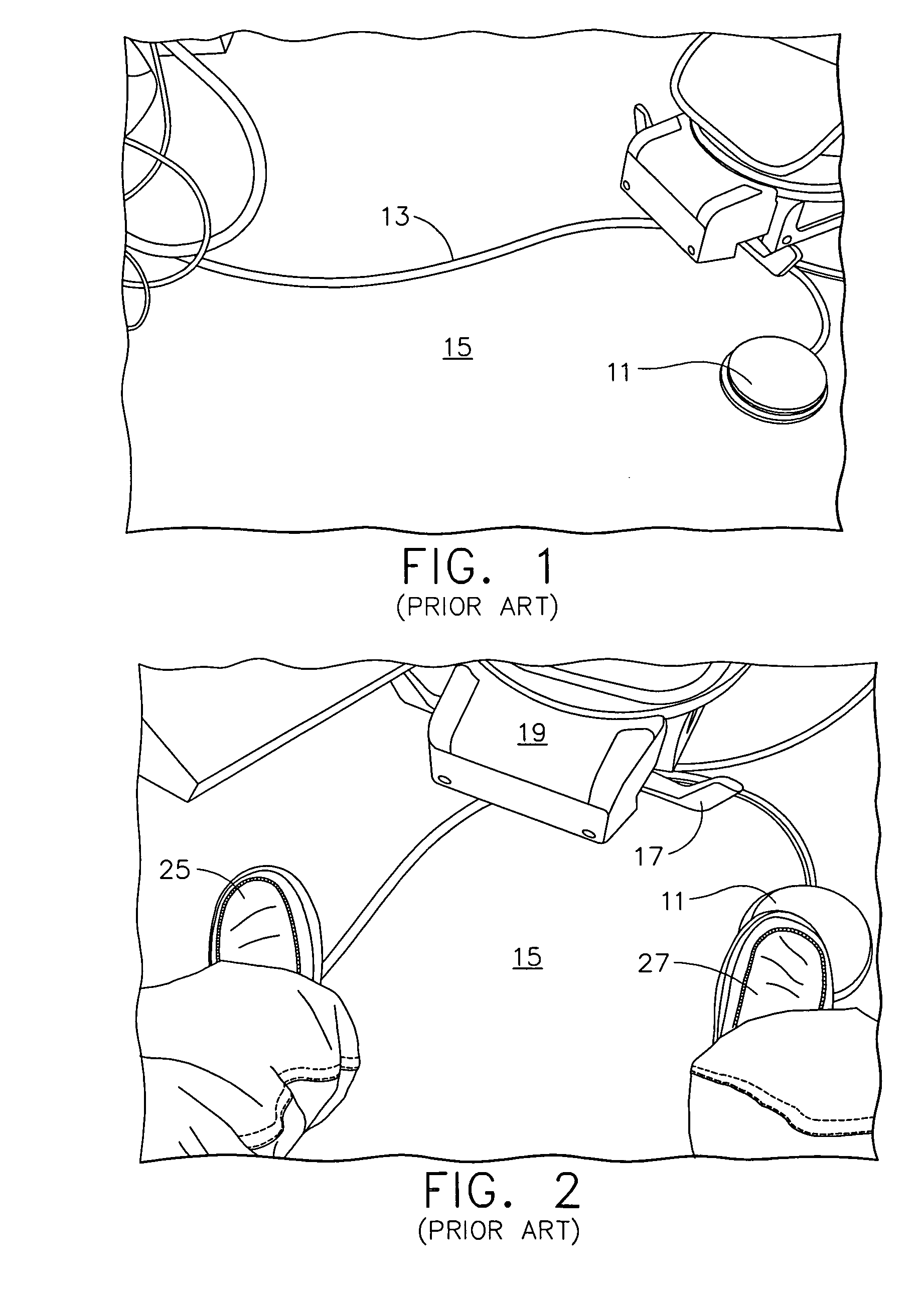Foot control for dental instruments
a technology for dental instruments and foot control, applied in the field of foot control, can solve the problems of inability to use the foot of the operator, crowded space, and limited space, and achieve the effect of improving the foot control and reducing clutter
- Summary
- Abstract
- Description
- Claims
- Application Information
AI Technical Summary
Benefits of technology
Problems solved by technology
Method used
Image
Examples
Embodiment Construction
[0031] Referring to the accompanying drawings in which like reference numbers indicate like elements, FIG. 1 illustrates a prior art foot control (rheostat) 11 connected to a dental instrument (not shown) by a cable or tube 13 (depending upon whether the dental instrument is air-powered or electrically powered). As seen in FIGS. 1-3, the cable / tube stretches across the floor 15 of the dentist's office, potentially interfering with a control lever 17 of the patient's chair 19, with free movement of the dentist's chair 21, or with free movement of the dental hygienist's chair 23. FIG. 2 illustrates, for example, the cable / tube interfering with the placement of the dentist's left foot 25 while the right foot 27 is operating the prior art foot control.
[0032] In FIGS. 4 and 5, a replacement foot control (rheostat) 31 for prior art foot control 11 is shown. Foot control 31 is cordless—the cable / tube 13 of the prior art device is eliminated. As is explained in detail below, foot control 3...
PUM
 Login to View More
Login to View More Abstract
Description
Claims
Application Information
 Login to View More
Login to View More - R&D
- Intellectual Property
- Life Sciences
- Materials
- Tech Scout
- Unparalleled Data Quality
- Higher Quality Content
- 60% Fewer Hallucinations
Browse by: Latest US Patents, China's latest patents, Technical Efficacy Thesaurus, Application Domain, Technology Topic, Popular Technical Reports.
© 2025 PatSnap. All rights reserved.Legal|Privacy policy|Modern Slavery Act Transparency Statement|Sitemap|About US| Contact US: help@patsnap.com



